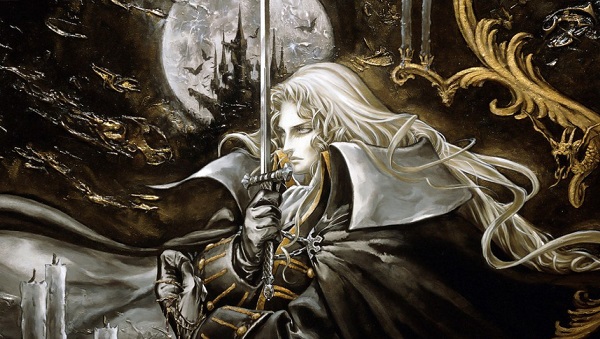
Castlevania: Symphony of the Night
KCET
Konami
PSX, PS3, Xbox 360
Over the many years since the SNES and PSX had their day in the sun, their legacy and influence have still been felt with regular validity. Legend of Zelda games are still compared to the SNES classic, A Link to the Past, Final Fantasy games are still measured by the stick of Final Fantasy VII, and exploratory action-platformers are levied into a prestigious subgenre known as “metroidvania”.
There is a certain laundry list of conditions that a game must meet to be allowed into these hallowed halls: it must be a side-scroller, it must have a large unlockable map, and it must have upgrades and implements that allow you to re-explore areas at your leisure with entirely new experiences. Recent additions to this subgenre include games like Guacamelee! and Dust: An Elyssian Tail but their proud progenitors are each one half of the coin from which the metroidvania subcategory takes it’s name: the first is the SNES classic, Super Metroid, and the second is the subject of this particular piece, Castlevania: Symphony of the Night.

That the Castlevania series is like a multi-headed Hydra of genres and legacies at this point is a given but, with that said, these games are at their best and most well known as they are seen here, in Symphony of the Night. What’s strange about that, especially for people who are unfamiliar with the four Castlevania games which pre-dated it, is that this is not what the series has always been about.
Blasting the series’ roots and burning their foundation with brimstone and sulfur, Symphony of the Night offered a game unlike the series, and gaming in general, had ever seen. No longer were players chained to the canonical Belmont family and their endless battle against the darkness of Dracula; instead they were given the chance to play as Alucard, Dracula’s son (who has a surprisingly cool name considering it’s just an uninspired anagram of Dracula). Alucard, in addition to lacking the squeaky clean qualities of his predecessors, also had some surprising abilities to take advantage of, such as turning into a bat, metamorphasizing into a wolf, or manifesting as mist, each with their own move sets and benefits.
These unique forms allowed Alucard to journey the landscape in vastly different ways, and opened up the game to hours of exploration in a series which had been largely linear up until this point. While the inspiration to take the series in this direction can be heavily attributed to the success of Super Metroid, which came three years earlier, the introduction of several RPG elements into the game was Konami’s true masterstroke.

In the past, Castlevania had always used a traditional HUD display at the top of the screen, featuring health, items and any other essential information. Symphony of the Night would turn this trope on its head, adding in a leveling system, abilities section, magical techniques, and even demon familiars to aid the player.
Being one of the earliest titles in the PSX’s library, SOTN nonetheless took full advantage of the upgrades that the hardware jump offered. From a couple of poor cinematic sequences, to the hilariously stilted voice acting, there’s no argument that some of these choices stretched the credibility of ambition to its absolute limit. With that said, the highlights of this shiny, new platform more than outweighed the downfalls of dabbling in foreign technology, with the sharp animation, screen-filling bosses, and intensely memorable music serving as the most enduring features of the game.
With succinctly impressive mechanics, endlessly addictive gameplay, and a castle that could be explored into eternity (twice), Castlevania: Symphony of the Night still stands tall as the height of the series, nearly a full 20 years later–and for anyone who’s had the pleasure to play it, it’s not hard to see why.

